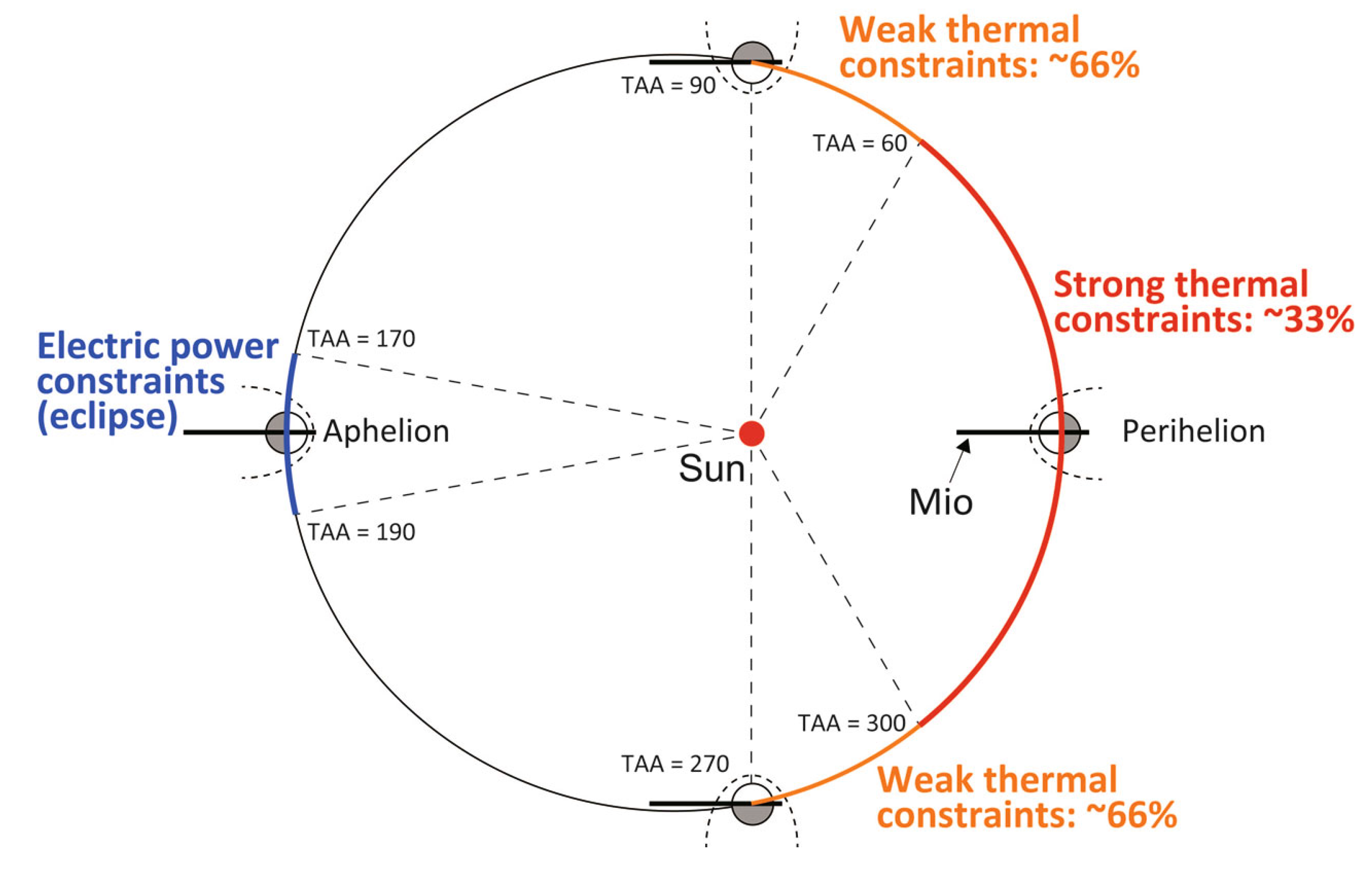Background
Mission Concept

Mercury, the innermost planet in the Solar System, has a unique space environment marked by a weak global magnetic field and a continuously replenishing exosphere, influenced by its close proximity to the Sun and strong solar winds. This makes Mercury a prime subject for comparison studies with Earth and understanding the extreme environments of Earth-type exoplanets orbiting near M-dwarf stars. The first Mercury orbiter, MESSENGER (MErcury Surface, Space ENvironment, GEochemistry, and Ranging), explored Mercury from 2011 to 2015 and made many discoveries about Mercury's magnetosphere and exosphere. However, MESSENGER's capabilities were limited due to several constraints, leaving many scientific questions unanswered. The BepiColombo mission, an international project between the European Space Agency (ESA) and the Japan Aerospace Exploration Agency (JAXA), launched in October 2018, aims to address these open issues. BepiColombo consists of two spacecraft, the Mercury Planetary Orbiter (MPO) and the Mercury Magnetospheric Orbiter (Mio). The MPO will focus on geology, planetary composition, inner structure, and the exosphere, while Mio, equipped with plasma instruments, a sodium exosphere spectral imager, and a dust monitor, will study Mercury's space environment. Mio's main scientific objectives include understanding the structure and origin of Mercury's magnetic field, the structure and dynamics of its magnetosphere, the structure and origin of its exosphere, and the physical environment of the inner heliosphere. In addition to conducting Mercury science, BepiColombo will analyze heliospheric physics in the inner Solar System, complementing NASA’s Parker Solar Probe and ESA’s Solar Orbiter. The BepiColombo mission is set to enter Mercury's orbit in December 2025, providing a chance to investigate the inner heliosphere from three points of measurement.

Satellite
The Mio spacecraft is equipped with five scientific instruments: the Mercury Plasma Particle Experiment (MPPE), Magnetic Field Investigation (MGF), Plasma Wave Investigation (PWI), Mercury Sodium Atmosphere Spectral Imager (MSASI), and Mercury Dust Monitor (MDM). The MPPE utilizes seven sensors to observe plasma and neutral particles emanating from Mercury, its magnetosphere, and the solar wind. MGF monitors the planet's magnetic field, its magnetosphere, and the interplanetary solar wind using two tri-axial fluxgate magnetometers. The PWI, using two pairs of antennas and a tri-axial search coil, investigates electric fields, electromagnetic waves, and radio waves originating from the magnetosphere and solar wind. The MSASI examines Mercury's thin sodium exosphere, and the MDM studies both planetary and interstellar dust. By integrating data from MPPE, MGF, and PWI, the mission can derive comprehensive plasma parameters with high temporal resolution. This approach represents a significant advancement from the MESSENGER mission, which lacked wave instruments and had a restricted field of view for the particle instrument. Thus, Mio is expected to resolve many unanswered questions from MESSENGER observations, given its optimal platform for plasma measurements. Mio's orbit around Mercury is highly elliptical, with closest and farthest points from Mercury's surface (periapsis and apoapsis) being 590 km and 11,649 km, respectively. The orbit's orientation varies relative to Mercury’s orbit around the Sun, allowing for a unique range of observations and minimizing thermal input from Mercury's hot surface. This configuration offers opportunities to study various aspects of solar wind-magnetosphere interactions, and the magnetosphere close to Mercury as the planet rotates.
Four Operation Phases
The spacecraft Mio was launched on October 20, 2018, from the Guiana Space Center using an Ariane 5 launcher. As part of the Mercury Composite Spacecraft (MCS) configuration, Mio was positioned inside the MMO Sunshield and Interface Structure (MOSIF).
1. Near Earth Commissioning Phase: After launching, the mission entered the near-Earth commissioning phase dedicated to checking each spacecraft system, science instruments, and MCS performance.
2. Interplanetary Cruise Phase: The interplanetary cruise phase was marked by the first electrical propulsion arc in December 2018, setting off a seven-year journey involving nine planetary flybys.
3. Mercury approach and separation phase: After detaching the Mercury Transfer Module (MTM), Mercury orbit insertion is expected to begin in December 2025.
4. Mercury Orbit Phase: Mio operation modes during the MCS configuration include Cruise Dormant, Cruise Initial, Cruise Standby, and Mio Cruise maintenance and checkout. Transition between modes is performed using an onboard control procedure. An emergency switch-off procedure is also available in case of significant anomalies. Mio's mission phases include the near-Earth commissioning phase, interplanetary cruise phase, Mercury approach phase and separation, and Mercury orbit phase. Each phase has specific objectives and operations. During the Mercury orbit phase, routine tasks will be conducted daily, and maintenance operations will be carried out as needed. The science operations will be controlled at the Sagamihara Space Operation Center (SSOC) in JAXA/ISAS, and plans are still being discussed for possible support by other ground stations.

Schematic view of orbital phases with major operational constraints for Mio science operations [Figure 8 of Murakami et al., 2020].
Science Goals
